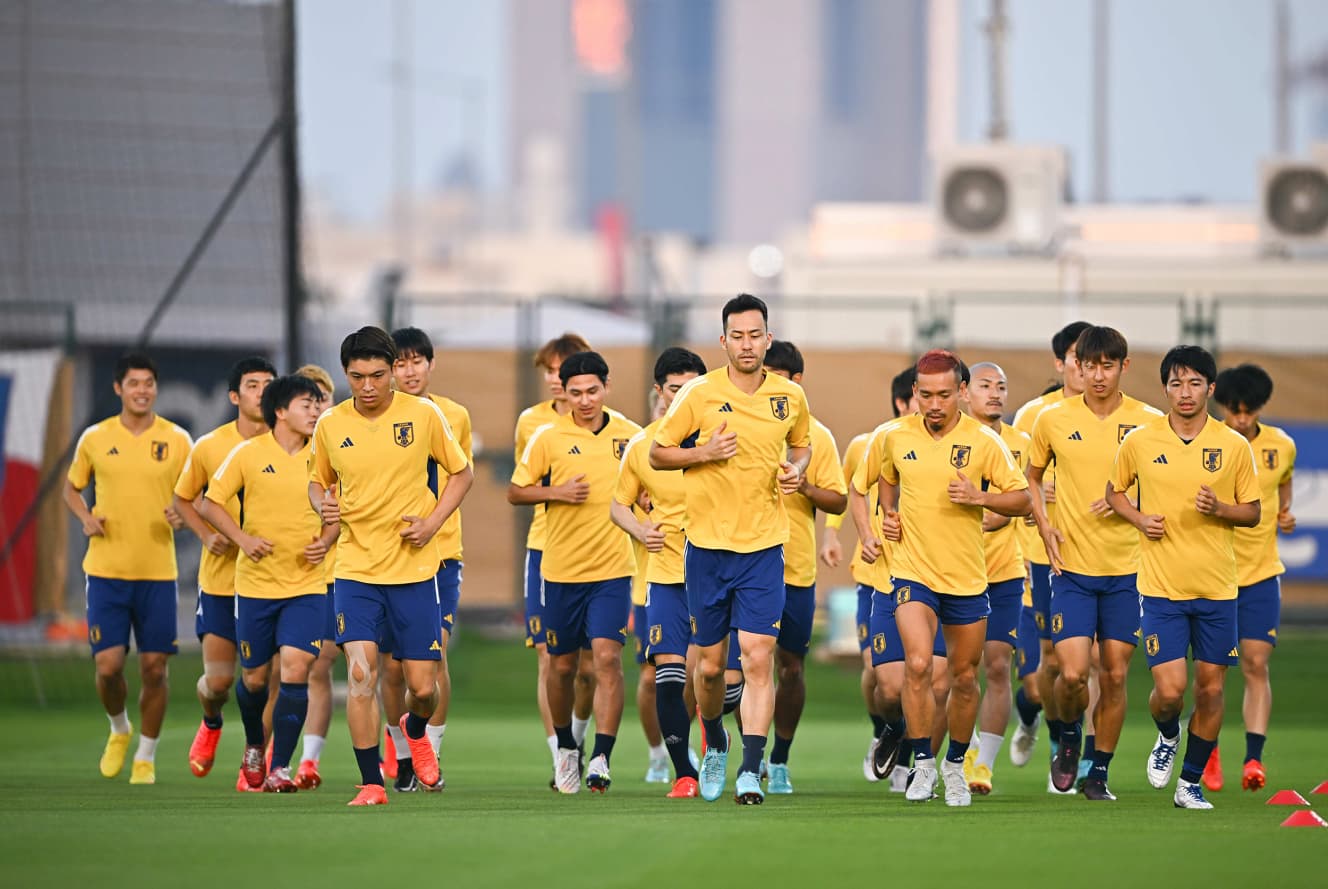Hajime Moriyasu and the 26 Samurais: Behind the Scenes of “16 Days of Fierce Fighting
[Inside Report] Who is the leader of the team? The unknown philosophy of the coach who was always treated as a "foolish general," the person who played an unexpected role, the atmosphere after the Costa Rica game, and the secret story of the "pre-training camp" that led to the team's leap forward. ......

In June, less than six months before the World Cup, Moriyasu’s Japan team was on the verge of disintegration. Moriyasu’s Japan team was on the verge of disintegrating. On June 14, Moriyasu’s team lost the final of the Kirin Cup to Tunisia, a lower-ranked team, by a score of 0-3.
On the bus after the game, there was an unmistakable cry of “This is not good enough.
The biggest problem at the time was the miscommunication between the coach and the players. Hajime Moriyasu, 54, thought it was enough to make the bare minimum of decisions in a style that left the players to their own initiative. However, some of the players playing for foreign clubs were fed up with abstract instructions. There was a huge gulf lying between the two sides,” said a soccer association official.
If the situation continued as it was, the team would have been eliminated from the group stage with all the losses, let alone Germany and Spain. It was the veterans who rose to the occasion of the team’s crisis. Sportswriter Shinya Kizaki, who has been covering the national team for many years, said, “The team’s European tour in September was a great success.
During the European tour in September, captain Maya Yoshida (34) led a thorough review of communication. For example, meetings were held every day with the participation of all players. Until then, players who were close to each other in position would get together for discussions, but not often as a whole. Yoshida, Nagatomo (Yuto, 36), Endo (Wataru, 29), and several others, who were the “executives,” conveyed their opinions directly to Mr. Moriyasu. They discussed not only the direction of the team, but also their requests for meetings, such as ‘I would like you to show more concrete images and give more detailed instructions,'” said Mr. Moriyasu.
In response to the direct requests from the core players, Moriyasu also approached the players. The effect was immediate. The team won a 2-0 victory against a higher-ranked team in the United States during the trip. This was a major turning point for the team.
Then, the new Moriyasu Japan team went to Qatar. Against Germany, the defense was switched to a back three in the second half, and the team won comfortably. Moriyasu’s research and experience shined through.
It was a bold change, but he got the idea from the Japanese futsal team,” said Moriyasu. Moriyasu has taken courses from former coach Bruno Garcia (48). In futsal, it is common to prepare multiple tactics and change them during the game according to the opponent and the situation. It was because he knew this concept that he was able to make aggressive changes,” said Kizaki.
However, the team unexpectedly lost the game against Costa Rica. The reserve players were inspired by the defeat. Ao Tanaka (24), who scored the game-winning goal against Spain, said after the game, “I was angry to see the players being criticized after the loss to Costa Rica,” and the morale of the subs supported the team. One association staff member said that the player who had been viewed with some skepticism about being selected for the national team served as a role model for the bench members.
Shibasaki (Gaku, 30) was dedicated right to the end. He took the lead in running and never cut corners in practice. He was always working for the team, sometimes carrying used uniforms with the staff. His presence was significant.”
The “Players First” Style
Moriyasu Japan lost to Croatia in their first match of the final tournament. Asked about the past four years at a press conference the day after the match, Moriyasu said, “I have no regrets. I think we did everything we can do now.
Moriyasu does not show emotion, but those involved in the association have seen glimpses of his anguish.
When Takumi Minamino (27) was at Liverpool, Moriyasu once blurted out, ‘What can I teach a player who is on the best team in the world? Nineteen of the 26 players in this year’s team are from overseas. I think he was wondering until the very end what he could do with players who had more experience than he did.
It was under these circumstances that he developed the concept of “players first.
After much thought and consideration, Mr. Moriyasu, who has an excellent sense of balance, decided that if the players had more experience than he did, he should give priority to them. It may be wrong for a coach, but he placed the utmost importance on making the players feel good about themselves. It is often said that he “respects the team circle,” and I believe that this was done to create an environment in which the players could play comfortably,” said a veteran reporter for a soccer magazine.
(A veteran reporter for a soccer magazine) “Moriyasu’s desire and the 26 samurai who responded to that desire. The memories of the “16 days of fierce battles” are burned into the hearts of many people.


From the December 23, 2022 issue of FRIDAY
PHOTO: JMPA representative photo by Afro (former coach Bruno Garcia)